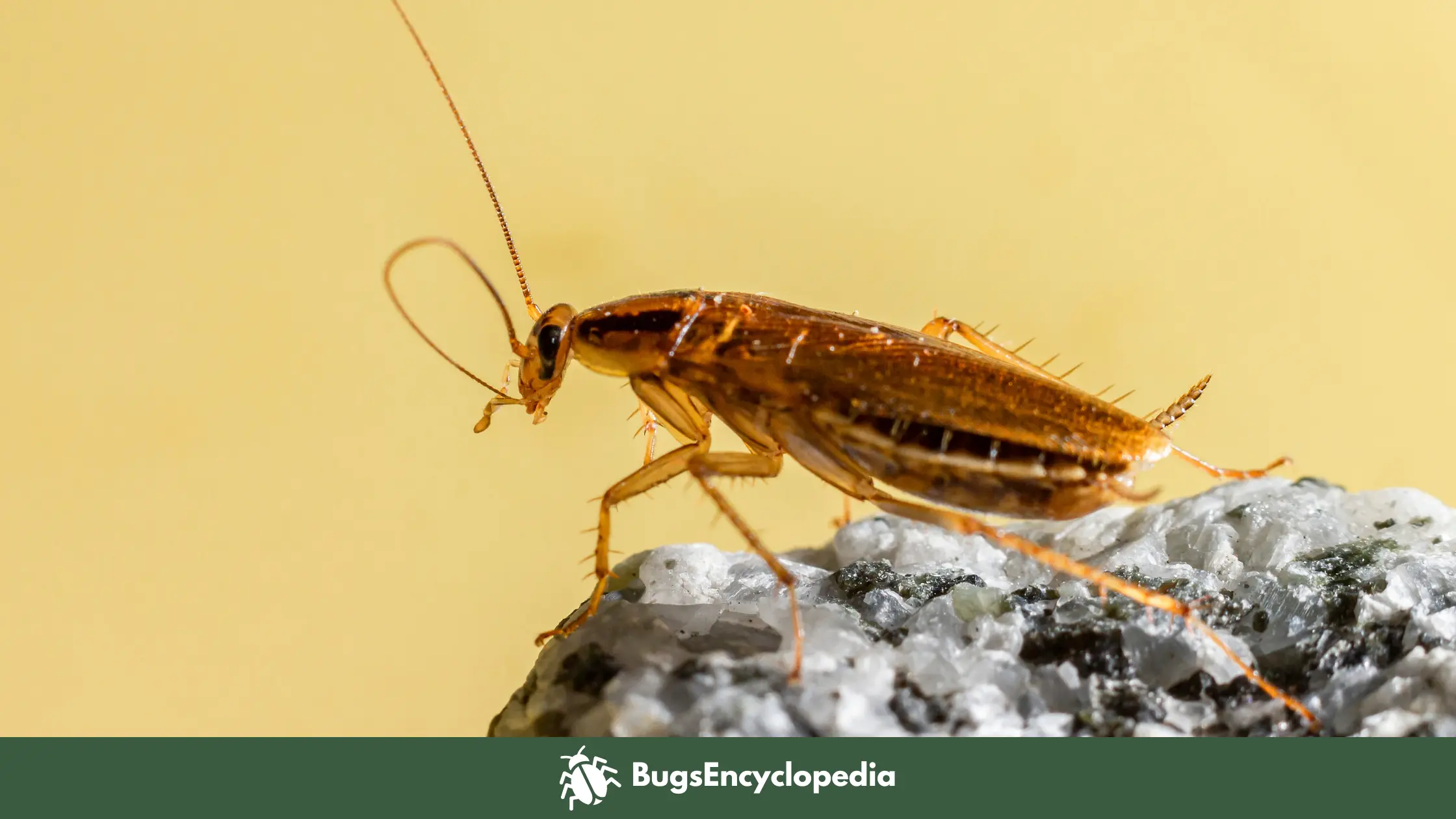Cockroaches are often viewed as pests, but these insects are remarkably fast runners that use their speed to survive and thrive. At up to 50 body lengths per second, cockroaches can run at the equivalent of a human running over 200 miles per hour!
Their specialized legs, gait, and streamlined bodies allow some species to clock top speeds of over 3 miles per hour. While not the absolute fastest insect, cockroaches outpace most others of a similar size.
Understanding the mechanics behind cockroach speed provides insight into insect locomotion and evolution. As an entomologist with over 10 years of experience, I have closely studied cockroach running abilities.
In this article, I will cover cockroach speed and locomotion in-depth, exploring how these insects can run so rapidly. We’ll examine anatomy, physiology, species differences, measurement techniques, and applications of blazing cockroach speed.
Whether a homeowner is frustrated with roaches or a scientist fascinated by them, readers will learn just how fast cockroaches can go.
Cockroach Anatomy & Physiology
How Fast Is A Cockroach?
Cockroach species can clock running speeds from 0.8 miles per hour up to 3.4 miles per hour at full tilt. Smaller species like German cockroaches top out under 2 mph, while giant cockroaches can exceed 3 mph at their fastest.
For their size, cockroaches run remarkably quickly compared to other insects. The American cockroach reaches speeds over 50 body lengths per second. This equates to a 6-foot-tall human running over 200 miles per hour!
Cockroach speed depends on factors like age, size, species, sex, temperature, environment, and motivation. For example, younger cockroaches tend to run faster than older ones. Warmer temperatures allow cockroaches to move more quickly within limits. Cockroaches also run faster when escaping threats versus routine foraging.
We will explore these influential factors in more detail later on.
Mechanics Of Cockroach Locomotion
Specialized anatomical and physiological adaptations allow cockroaches to run rapidly. One key factor is their use of a tripod gait.
At top speeds, cockroaches run using a tripod stance where the front and back legs on one side move in unison with the middle leg on the opposite side. This provides stability similar to a tripod.
Cockroach legs strike the ground in a rhythm coordinated by nerve signals that trigger precise muscle contractions. The sequence allows the next leg to catch the ground before the previous foot leaves it. This creates brief periods where 3 legs support the body, minimizing vertical displacement and instability.
Sprawling posture is another important component of rapid cockroach running. Their legs extend out to the sides rather than under the body like most mammals.
This sprawling leg posture improves stability by widening the base of support. It also allows greater flexion and extension of joints to propel the body forward rapidly.
Measuring Cockroach Speed
Researchers use various techniques to quantify the top running speeds cockroaches can achieve. High-speed cameras capture individual cockroaches running across a trackway and calculate speed by measuring how far they travel over time.
Sophisticated treadmills with small troughs or electrode grids can motivate and measure cockroaches reaching top speeds. Wind tunnels with variable speed settings are also used to determine maximum cockroach running speed.
Running chambers with high-speed cameras and precisely spaced electrical wires help calculate kinematics like stride length and frequency. Trails painted on cockroaches allow analysts to visualize leg movements and model energy expenditure.
Average Speed Of Common Cockroach Species

The main cockroach pests around homes and businesses demonstrate varying running speeds when tested under ideal lab conditions. Here are the top speeds of several prevalent domestic species:
- American Cockroach – 3.4 mph
- Native to Africa, this large species can exceed 50 body lengths per second at maximum speed.
- German Cockroach – 1.5 mph
- The small cockroaches common in kitchens and bathrooms run at speeds under 2 mph.
- Brownbanded Cockroach – 2.1 mph
- This nimble climber has rapid escape speeds of over 2 mph.
- Oriental Cockroach – 1.7 mph
- Males of this slow-moving pest can briefly sprint nearly 2 mph.
- Smoky brown Cockroach – 2.8 mph
- One of the fastest cockroach species capable of brief 2.8+ mph bursts.
Factors Influencing Cockroach Speed
Many factors affect how rapidly cockroaches can run in different real-world conditions. Larger species with longer legs like the American cockroach can stride faster than smaller ones like German cockroaches.
Younger cockroaches less than a couple months old may run over 50% faster than adults. Higher ambient temperatures allow cockroaches to speed up within limits before overheating.
Motivation also plays a key role. Cockroaches escaping imminent threats like stomping feet can clock their absolute maximum speeds.
Exploratory walking and routine foraging involve slower speeds. Running speed also depends on the environment. Smooth, uncluttered surfaces allow faster movement than uneven or obstacles-strewn terrain.
Comparing Cockroach Speed To Other Animals
While one of the fastest-running insects, cockroaches do not claim the top-speed title. Tiger beetles can run at blazing 5 mph speeds, over 5 times their body length per second.
Wind scorpions and velvet worms can also sprint faster than cockroaches relative to their size. But cockroaches significantly outpace most insects their size like ants, grasshoppers, and butterflies.
Their legs can cycle over 20 times per second, rivaling small mammals. If human legs could move as rapidly for our size, we could run over 350 miles per hour!
Real-Life Applications Of Cockroach Speed
In nature, cockroach running speed provides key survival and reproductive advantages. Fast running allows seeking food and water sources quickly before competitors.
Rapid retreats into crevices and cracks thwart predators. Quickly navigating complex habitats improves resource location and courtship opportunities.
For the cockroaches adapted to live in human dwellings, speed has other applications. Pantry raids can be completed rapidly between human disturbances.
Blazing trails across counters and walls make capturing the pests difficult. And infesting human habitats occurs quickly as they race room to room.
Evolutionary Advantages Of Speed
Cockroaches demonstrate high running speed due in part to natural selection over millions of years. Faster cockroaches had better odds of escaping predators and finding resources, earning more opportunities to mate and pass speed adaptations to offspring.
Generation after generation of incrementally faster cockroaches eventually resulted in species capable of covering 50 body lengths per second.
Rapid running capacity continues providing cockroaches key survival and reproductive advantages. This evolutionary process has yielded diverse species filling niches requiring speed, from forest floors to human dwellings.
Going forward, rapid locomotion will likely remain paramount to cockroaches’ success.
Anatomy Adaptations For Speed
Along with specialized gaits and posture, cockroaches possess specific anatomical features that facilitate speedy running. Their legs have pointed tips allowing purchase on rough terrain.
Joints like the coxa, femur, and tibia allow for greater flexion and extension to propel the body. Leg segments are also covered with short spines that provide traction with the ground.
The exoskeleton of the thorax provides strong muscle attachment points. Powerful coxa retractor muscles rapidly draw the legs backward with each running step.
The tendons involved store energy like springs that enhance propulsion. Air sacs throughout the body maintain oxygenation during sprints.
All these adaptations enable cockroaches to run at remarkable speeds.
Cockroach Running Behaviors
Cockroaches employ different running strategies depending on the context. Escaping imminent threats like an approaching shoe elicits their fastest burst speeds.
This rapid escape response allows for escaping predation at critical moments. Slower running with more pauses characterizes exploratory walking as they probe new environments.
Foraging trips also involve bursts of high-speed running to efficiently cover ground in search of food and water. Females sprint rapidly when seeking sheltered spots to deposit oothecae egg cases.
Males chasing females may also run rapidly to keep up during courtship. Whether escaping danger or pursuing life’s needs, speed is a crucial tool in the cockroach’s survival arsenal.
Lab Studies On Cockroach Speed
Researchers have conducted many laboratory studies quantifying cockroach running speeds and mechanics. High-speed cameras capture leg kinematics, joint motions, and gait patterns during sprints on treadmills and runway tracks.
Electrical sensing grids can monitor gait timing and foot strikes. Trails of paint on legs allow analysts to visualize leg movements and model energy use.
Wind tunnels are used to determine maximum running speed by incrementally increasing airflow over sprinting cockroaches. Leg removal and weighting studies reveal how limbs contribute to rapid running.
Muscle stimulation and inhibition can identify which muscle groups are most important for powering top speed. Together these lab techniques shed light on the nuances of rapid cockroach locomotion mechanics.
In The End
The next time you see a cockroach dart across the floor, remember that you are witnessing an impressive sprinting specimen.
Cloaked in an unappealing guise is an elite insect runner, capable of covering over 50 body lengths per second with specialized legs, gait, and physiology.
While sometimes a pest, the cockroach’s running speed is a remarkable outcome of natural selection over millions of years.
These speedy insects provide a fascinating case study of rapid locomotion that scientists continue investigating. With peak speeds over 3 miles per hour, cockroaches fully earn their reputation for quickness!

I’m Shawn Gleason, a seasoned Entomologist with a Ph.D. from the University of Florida and the founder of Bugs Encyclopedia. With over 10 years of experience in Integrated Pest Management, I’m a certified Pesticide Applicator and a recognized authority in entomology. I’ve contributed to numerous prestigious journals, and I use Bugs Encyclopedia to share my deep knowledge, creating an accessible, trusted resource for bug enthusiasts and the general public. My mission is to demystify the complex world of bugs, ensuring that accurate, comprehensive information is accessible to all.
